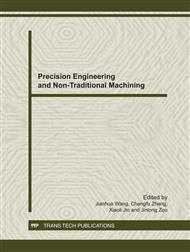p.597
p.602
p.609
p.613
p.617
p.622
p.626
p.630
p.634
An Artificial Immune Inspired Hybrid Classification Algorithm and its Application to Fault Diagnosis
Abstract:
To efficiently mining the classification model, an artificial immune inspired hybrid classification algorithm was put forward by means of combining antibody clonal selection, fuzzy C means clustering (FCM) and information entropy principle. In this algorithm, fuzzy C means clustering algorithm was employed to generate initial antibody population for making use of the prior knowledge of the training data. From the viewpoint of information entropy, for evolving memory cells the information entropy of antibodies population was employed to provide stop criteria of training. Finally classification was performed in a nearest neighbor approach. Experimental results on the fault detection of DAMADICS demonstrate the effectiveness of the algorithm. Compared with CLONALG artificial immune classifiers, the hybrid classifier has a superior performance in terms of recognition rate, computation time, number of memory cells and condense rate.
Info:
Periodical:
Pages:
626-629
Citation:
Online since:
November 2011
Authors:
Price:
Сopyright:
© 2012 Trans Tech Publications Ltd. All Rights Reserved
Share:
Citation:


